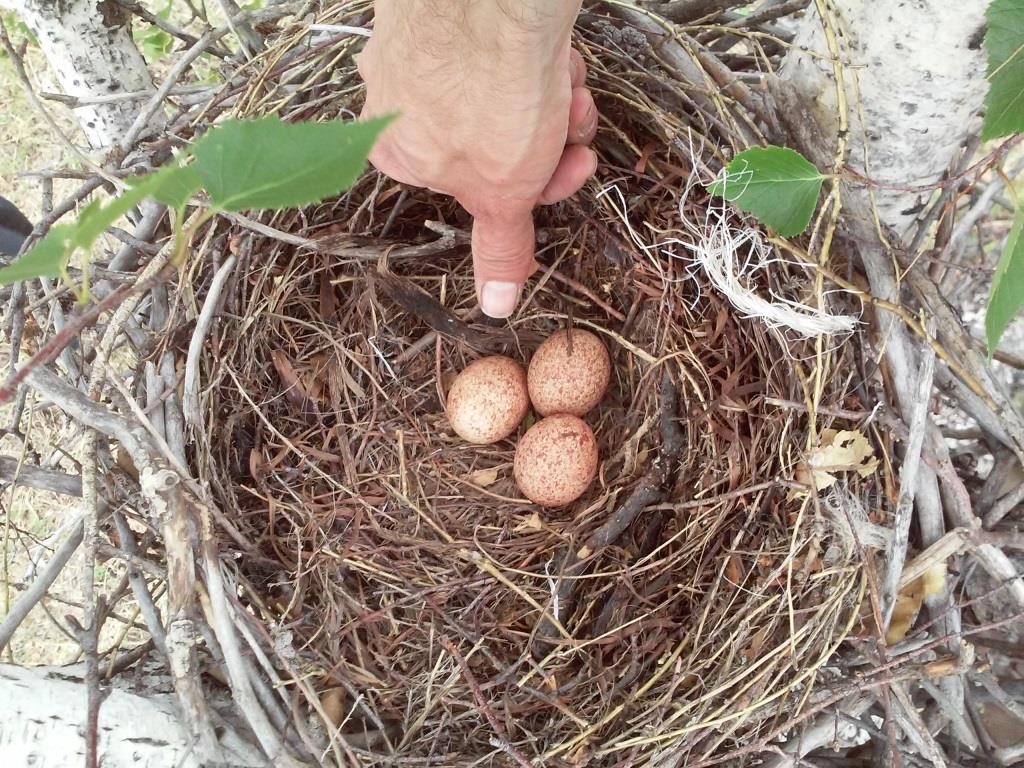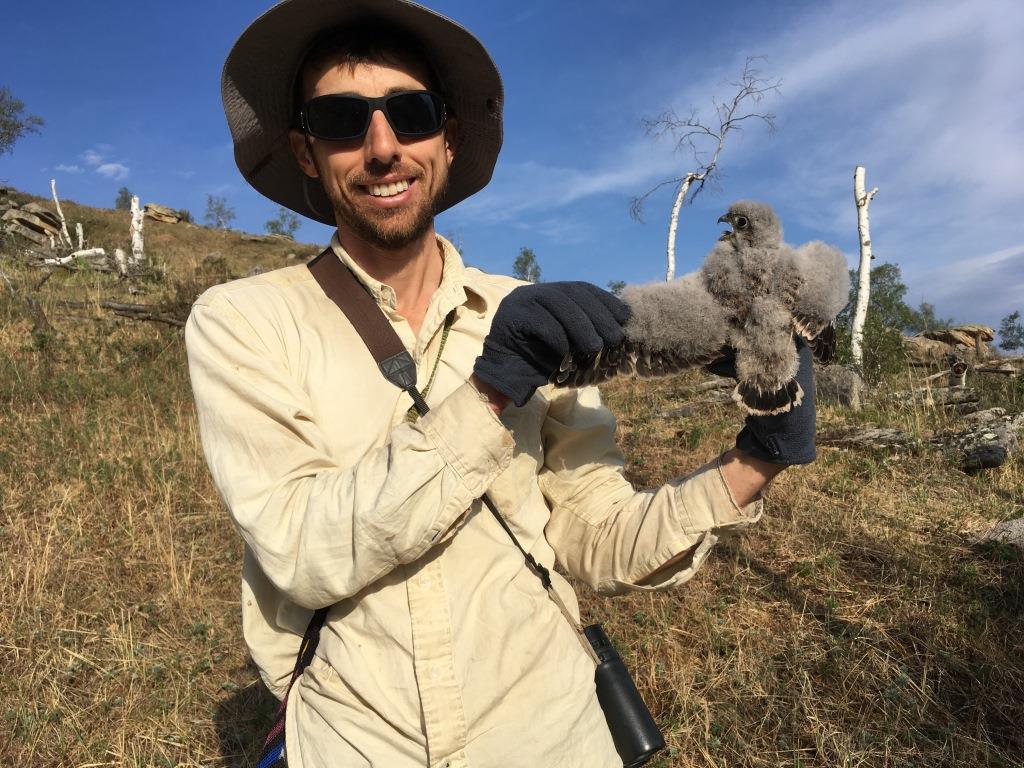Mongolia Field Note #11 ‣ Author: Ryan C. Burner
Above Photo: Studying the nesting ecology of the Amur Falcon alongside herds of Takhi, the Mongolia wild horse. Photo credit: Gombobaatar Sundev.
Mongolia, due to its diversity of habitats and elevations and its key location along central Asian migratory routes, is home to a wide variety of bird life. Much important habitat is under threat, however, from the changes in vegetation that can result from climate change, and from overgrazing by domestic livestock.

Falcon nest
In collaboration with Dr. Gombobaatar Sundev of the National University of Mongolia, I spent the summer in Hustai National Park studying breeding Amur Falcons (Falco amurensis). Unlike the famous Saker Falcon of Mongolian pride, this small falcon uses nests built by magpies and little is known about the details of its nesting ecology. Our goal was not only to better understand this fascinating species, but also to use them to study the effects of forest loss in the park (due to disease, drought, and browsing pressure from animals).
We monitored over 25 falcon nests and 40 nests of other species to determine daily survival and predation rates, weighed and measured chicks from time of hatching until they left the nest, and collected toenail and feather samples to analyze nestling diet using nitrogen isotopes. We also recorded data on hundreds of former Common Magpie nest structures throughout our study area. This will allow us to determine the characteristics of nests that the falcons are choosing to use, and see how prevalent these nests types are in order to determine if nest availability may be limiting this species.

5 day old falcon chick
Hustai National Park is special not only because of the concentration of Amur Falcons that are known to nest there, but also because it is one of the world’s key reintroduction sites for the Takhi (aka Przewalski’s horse or Mongolian wild horse). The success of the Takhi reintroduction has been accompanied by an increase in the population of Red Deer due to protection from hunting, and increased browsing pressure by these deer may be reducing forest regeneration.
We are just beginning to analyze our data and process samples, but we hope that our work will provide some helpful insights into how Amur Falcons choose nesting sites, what they feed their young in various habitats, and how this affects the growth of nestlings. This should allow the park to make management recommendations and better understand the implications of declines in forest health.
Many thanks to the American Center for Mongolian Studies for funding and facilitating this research, and to the National University of Mongolia and Mongolian Ornithological Society for their support.
References
Symes, Craig T., and Stephan Woodborne. “Migratory connectivity and conservation of the Amur Falcon Falco amurensis: a stable isotope perspective.” Bird Conservation International 20.2 (2010): 134-148.
Pietersen, Darren W., and Craig T. Symes. “Assessing the diet of Amur Falcon Falco amurensis and Lesser Kestrel Falco naumanni using stomach content analysis.” Ostrich 81.1 (2010): 39-44.
About the Author
Ryan Burner is a PhD student at the Louisiana State University Museum of Natural Science, where he studies community ecology of birds in Borneo. This trip was his first of (hopefully) many to the Mongolian steppe.

